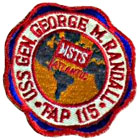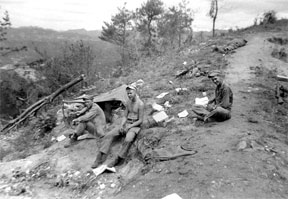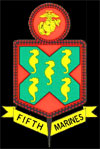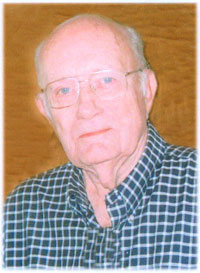| North
High School Wall of Honor Robert David Long Class of June, 1949 |
 |
|||||||||||||||||||||||||||||||||||||||||||||||||||||||||||||||||||||||||||||||||||||||||||||||||||||||||||||||||||||||||
| Research done by Claradell Shedd, Class of 1953 and Robert Lee Gates, Class of 1949 | ||||||||||||||||||||||||||||||||||||||||||||||||||||||||||||||||||||||||||||||||||||||||||||||||||||||||||||||||||||||||||
| Robert David Long | ||||||||||||||||||||||||||||||||||||||||||||||||||||||||||||||||||||||||||||||||||||||||||||||||||||||||||||||||||||||||||
|
Bob graduated in the June, 1949 North High class. He enlisted in the US Marine Corps on July 5, 1949 in Des Moines, IA. His service number was ________. Bob's next of kin was listed as Mrs. Gladys Willis, 1318 10th Street, Des Moines, IA. |
||||||||||||||||||||||||||||||||||||||||||||||||||||||||||||||||||||||||||||||||||||||||||||||||||||||||||||||||||||||||||
|
||||||||||||||||||||||||||||||||||||||||||||||||||||||||||||||||||||||||||||||||||||||||||||||||||||||||||||||||||||||||||
|
||||||||||||||||||||||||||||||||||||||||||||||||||||||||||||||||||||||||||||||||||||||||||||||||||||||||||||||||||||||||||
| *Camp Pendleton,
CA The Battalion reactivated 1 October 1949 at Camp Pendleton, California, as the 1st Battalion, 5th Marines, 1st Marine Division, Fleet Marine Force. It was redesignated 7 July 1950 as the 1st Battalion, 5th Marines, 1st Provisional Marine Brigade, Fleet Marine Force. It deployed during August 1950 to Korea , and was redesignated 13 September 1950 as the 1st Battalion, 5th Marines, 1st Marine Division, Fleet Marine Force. the unit participated in the Korean War Operating from Pusan Perimeter, Inchon-Seoul, Chosin Reservoir, East Central Front, and Western Front. It participated in the defense of the Korean Demilitarized Zone from July 1953 to February 1955. The Battalion relocated during March 1955 to Camp Pendleton, California. **USS General George M. Randall (AP-115) Korean War As an MSTS ship, USS General George M. Randall made scheduled runs between the West coast of the United States and the Orient until fighting erupted in Korea in the summer of 1950. She participated in the amphibious assault at Inchon which routed the North Korean Army and forced Communist evacuation of South Korea. After hordes of Chinese Communist troops poured into Korea and trapped American forces, she served in the evacuation of Hungnam, which saved the embattled G.I.'s enabling them to return to the fight. She moored at New York, New York, on 26 May 1951, and made four voyages from New York to Bremerhaven and Southampton before returning to the Pacific. On 11 March 1951, General George M. Randall departed Yokohama, Japan, with the bodies of 52 men, the first Korean War dead to be returned to the United States, including Major General Bryant E. Moore, who had commanded the IX Corps. Armed Services honor guards were in attendance at the departure, as was an Army Band, and was heavily covered by the press. The ship arrived at San Francisco, also carrying 1500 officers and men of the 1st Marine Division being rotated home for 30 day leave. She then returned to Yokohama on 24 October. ***1st Marine Division(From the 1st Marine Division Presidential Unit Citation Award) The President of the United States takes pleasure in presenting The Presidential Unit Citation to the First Marine Division Reinforced for services as set forth in the following citation: "For extraordinary heroism in action against the enemy aggressor forces in Korea during the periods 21 to 26 April, 16 May to 30 June, and 11 to 25 September, 1951. Spearheading the first counteroffensive in the spring of 1951, the First Marine Division, Reinforced, engaged the enemy in the mountainous center of Korea in a brilliant series of actions unparalleled in the history of the Marine Corps, destroying and routing hostile forces with an unrelenting drive of seventy miles north from Wonju. During the period 21 to 26 April, the full force of the enemy counteroffensive was met by the Division, north of the Hwachon Reservoir. Although major units flanking The Marine Division were destroyed or driven back by the force of this attack, the Division held firm against the attackers, repelling the onslaught from three directions and preventing the encirclement of the key center of the lines. Following a rapid regrouping of friendly forces in close contact with the enemy, the First Marine Division, Reinforced, was committed into the flanks of the massive enemy penetration and, from 16 May to 30 June, was locked in violent and crucial battle which resulted in the enemy being driven back to the north with disastrous losses to his forces in the number of killed, wounded, and captured. Carrying out a series of devastating assaults, the Division succeeded in reducing the enemy's main fortified complex dominating the 38th Parallel. In the first significant offensive of the action in Korea, from 11 to 25 September 1951, the First Marine Division, Reinforced, completed the destruction of the enemy forces in Eastern Korea by advancing the front against a final desperate enemy defense in the "Punch Bowl" area in heavy action which completed the liberation of South Korea in this locality. With the enemy's major defenses reduced, his forces on the central front decimated, and the advantage of terrain and the tactical initiative passing to friendly forces, he never again recovered sufficiently to resume the offensive in Korea. The outstanding courage, resourcefulness, and aggressive fighting spirit of the officers and men of the First Marine Division, Reinforced, reflect the highest credit upon themselves and the United States Naval Service." (From the 1st Marine Division Presidential Unit Citation Award) The President of the Republic of Korea takes profound pleasure in citing for outstanding and superior performance of duty during the period 26 October to 27 July 1953 the First United States Marine Division Reinforced for the award of President Unit Citation: "Landing at Wonsan on 26 October 1950 the First United States Marine Division (Reinforced) advanced to Yudam-ni where they engaged the Chinese Communist Forces. The heroic and courageous fighting of the First United States Marine Division (Reinforced), which was outnumbered but never outfought by the Chinese Communist Forces; coupled with its fight against the terrible winter weather in this return to Hungnam, has added another glorious page to the brilliant history of the United States Marines. After regrouping and retraining, the First United States Marine Division (Reinforced) rejoined the United Nations Forces and began the attack to the north which drove the aggressors relentlessly before them. The enemy spring offensive during April 1951 which threatened to nullify the recent United Nations gains was successfully repulsed by the First Marine Division (Reinforced) and when other Republic of Korea Forces were heavily pressed and fighting for survival the timely offensive by this Division gave heart to the people of Korea." ****U.S. Recoilless Rifles Although recoilless rifles were used by the U.S. Army during the last year of WWII, the weapons truly proved their worth during the fighting in Korea. The recoilless rifles could fire artillery weight shells from the shoulder with considerable accuracy. The unique design of the recoilless rifle permitted some of the propellant gases to escape from the rear of the weapon. As a result, the escape of the gases eliminated the recoil of the round. Several sizes of recoilless rifles were used by the American forces in Korea. All of the models were single shot, air cooled, and used fixed ammunition. The ammunition consisted of high explosive, canister, high explosive anti-tank and smoke. The smaller models were usually fired from the shoulder, while the larger models were mounted on tripods or on vehicles. All of the recoilless rifles were proven to be effective against enemy personnel as well as fortifications. |
||||||||||||||||||||||||||||||||||||||||||||||||||||||||||||||||||||||||||||||||||||||||||||||||||||||||||||||||||||||||||
 |
||||||||||||||||||||||||||||||||||||||||||||||||||||||||||||||||||||||||||||||||||||||||||||||||||||||||||||||||||||||||||
| *****USNS Marine Adder;
T-AP-193 USNS Marine Adder (T-AP–193) was a troop ship for the United States Navy in the 1950s. She was built in 1945 for the United States Maritime Commission as SS Marine Adder, a Type C4-S-A3 troop ship, by the Kaiser Company during World War II. In 1950, the ship was transferred to the Military Sea Transport Service of the U.S. Navy as a United States Naval Ship staffed by a civilian crew. After ending her naval service in 1957, she entered the National Defense Reserve Fleet, but was sold for commercial use in 1967. Renamed SS Transcolorado, she was chartered by the Military Sealift Command as a civilian cargo ship designated T-AK-2005. ******USS General Walter H. Gordon; T-AP-117 In November 1951, upon expiration of APL's charter, she was taken into the Military Sea Transportation Service (MSTS), reinstated on the Naval Vessel Register and placed in service as a civilian-manned Navy transport. USNS General W. H. Gordon (T-AP-117) departed San Francisco in December 1951 on the first of many trans-Pacific voyages in support of Korean War operations. |
||||||||||||||||||||||||||||||||||||||||||||||||||||||||||||||||||||||||||||||||||||||||||||||||||||||||||||||||||||||||||
|
||||||||||||||||||||||||||||||||||||||||||||||||||||||||||||||||||||||||||||||||||||||||||||||||||||||||||||||||||||||||||
|
||||||||||||||||||||||||||||||||||||||||||||||||||||||||||||||||||||||||||||||||||||||||||||||||||||||||||||||||||||||||||
|
||||||||||||||||||||||||||||||||||||||||||||||||||||||||||||||||||||||||||||||||||||||||||||||||||||||||||||||||||||||||||
|
||||||||||||||||||||||||||||||||||||||||||||||||||||||||||||||||||||||||||||||||||||||||||||||||||||||||||||||||||||||||||
|
||||||||||||||||||||||||||||||||||||||||||||||||||||||||||||||||||||||||||||||||||||||||||||||||||||||||||||||||||||||||||
|
||||||||||||||||||||||||||||||||||||||||||||||||||||||||||||||||||||||||||||||||||||||||||||||||||||||||||||||||||||||||||
|
||||||||||||||||||||||||||||||||||||||||||||||||||||||||||||||||||||||||||||||||||||||||||||||||||||||||||||||||||||||||||
|
||||||||||||||||||||||||||||||||||||||||||||||||||||||||||||||||||||||||||||||||||||||||||||||||||||||||||||||||||||||||||
|
||||||||||||||||||||||||||||||||||||||||||||||||||||||||||||||||||||||||||||||||||||||||||||||||||||||||||||||||||||||||||
|
||||||||||||||||||||||||||||||||||||||||||||||||||||||||||||||||||||||||||||||||||||||||||||||||||||||||||||||||||||||||||
|
||||||||||||||||||||||||||||||||||||||||||||||||||||||||||||||||||||||||||||||||||||||||||||||||||||||||||||||||||||||||||
| Died
in mobile home fire: 08/25/08. Buried at Highland Memory Gardens Cemetery;
Des Moines, Polk, Iowa, USA. Plot: Section: Resurrection; Lot 86A, Grave 3 |
||||||||||||||||||||||||||||||||||||||||||||||||||||||||||||||||||||||||||||||||||||||||||||||||||||||||||||||||||||||||||
| Music: "Semper Fidelis" | ||||||||||||||||||||||||||||||||||||||||||||||||||||||||||||||||||||||||||||||||||||||||||||||||||||||||||||||||||||||||||
| Home
|
Back/allyears |
WWI |
WWII |
Korea |
Vietnam |
Afghanistan/Iraq |
Lyrics
|
Refs/Awards |
Contact ©2025-csheddgraphics All rights reserved. All images and content are © copyright of their respective copyright owners. |
||||||||||||||||||||||||||||||||||||||||||||||||||||||||||||||||||||||||||||||||||||||||||||||||||||||||||||||||||||||||||





















